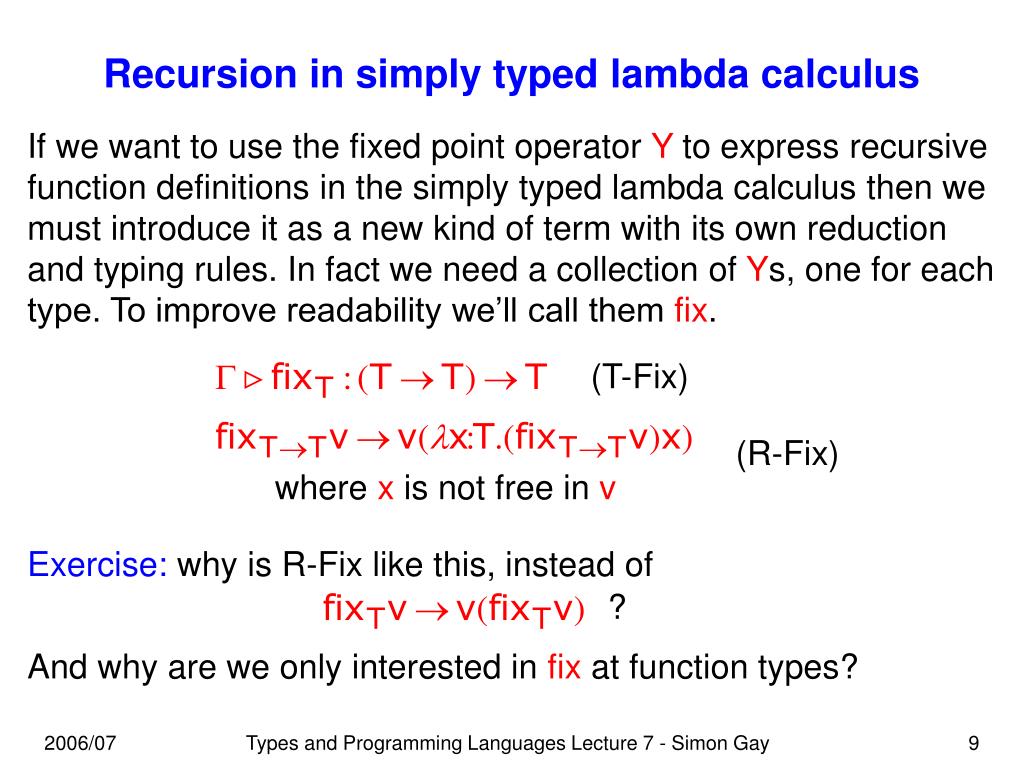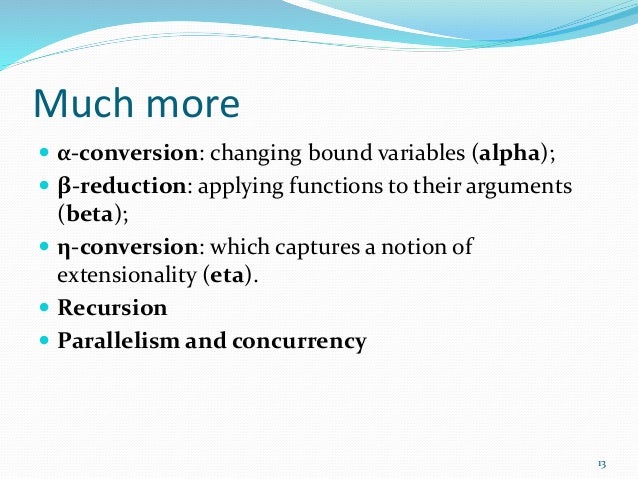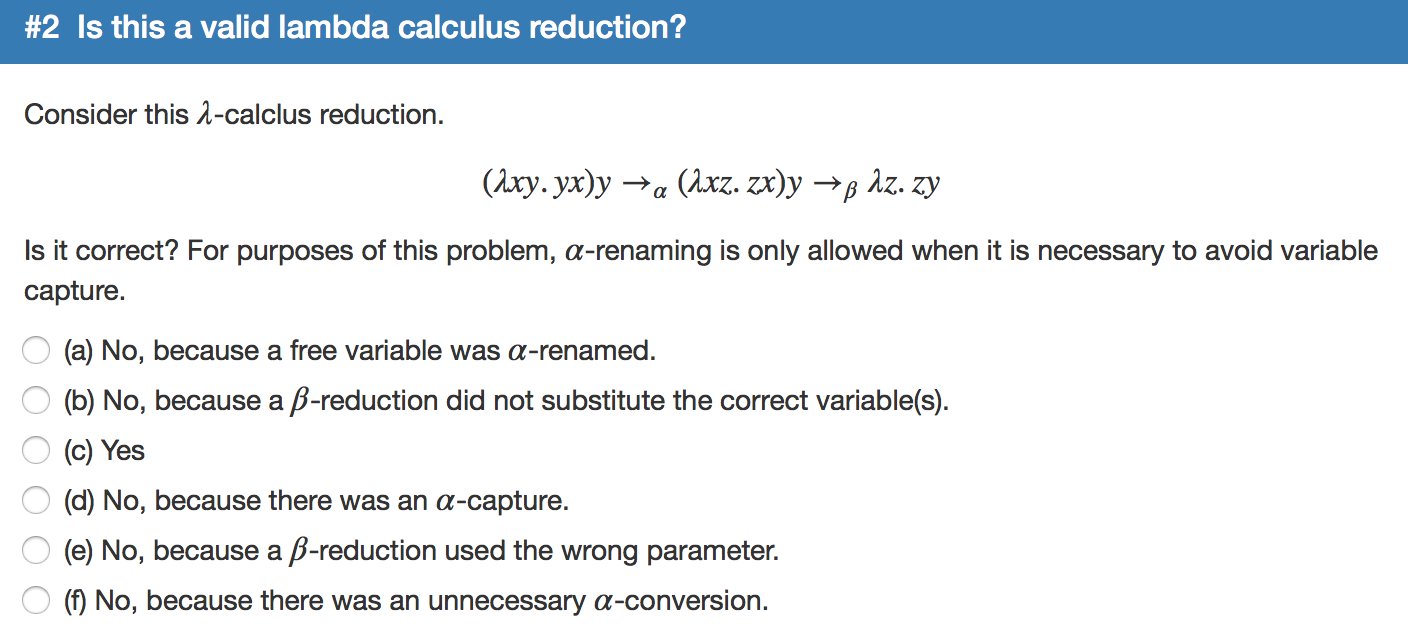

It’s lambdas all the way down! However, to actually model and perform useful computations we say that certain expressions represent values. The only values that Lambda Calculus variables can take on is other functions (i.e.

Note that anonymous functions in languages like JavaScript and Python are also frequently called lambda expressions, or just lambdas. A lambda expression has no name, it is anonymous.Some things to note about such lambda expressions: When we discussed combinators in JavaScript, we gave this function a name. Here is a simple Lambda Abstraction of a function: It is worth looking at this notation before studying haskell-like languages because it was the inspiration for Haskell syntax. Lambda Calculus expressions are written with a standard system of notation. The operations we can apply to Lambda Calculus expressions to simplify (or reduce) them, or to prove equivalence, can also be applied to pure functions in a programming language that supports higher-order functions. The Lambda Calculus is also important to study as it is the basis of functional programming. It has been proven that, as a model of computation, the Lambda Calculus is just as powerful as Turing Machines, that is, any computation that can be modelled with a Turing Machine can also be modeled with the Lambda Calculus. However, while the Turing Machine is based on a hypothetical physical machine (involving tapes from which instructions are read and written) the Lambda Calculus was conceived as a set of rules and operations for function abstraction and application.

You are probably aware of the more famous model for computation developed around the same time by Alan Turing: the Turing Machine. The Lambda Calculus is a model of computation developed in the 1930s by the mathematician Alonzo Church. Apply conversion and reduction rules to simplify lambda expressions.Relate the lambda calculus to functional programming.



 0 kommentar(er)
0 kommentar(er)
